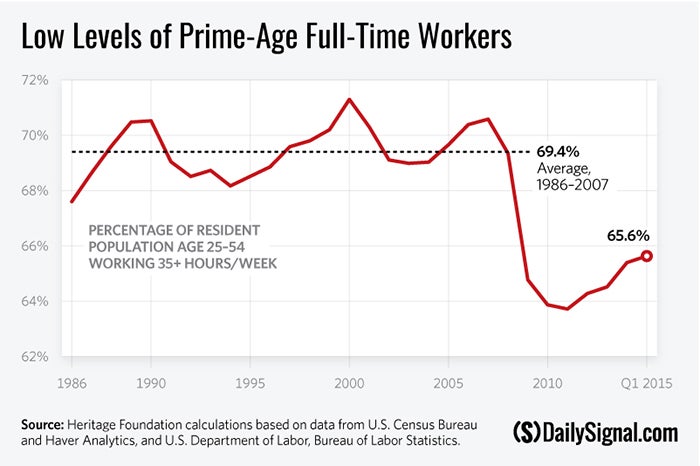In 2009, the percentage of prime working-age U.S. residents who work 35 hours or more per week plunged to a 24-year low. Six years later, it remains five percentage points below its pre-recession level. So today, even though there are 1.3 million more people in the 25-54 age group than in 2007, there are 4.7 million fewer working full time.
As previously reported, many former workers have stopped even applying for jobs. Job openings have risen substantially since the recession, but the labor force of prime-age workers has gone in the other direction.
Many workers have found they face high marginal tax rates and lose valuable means-tested welfare benefits if they return to work. Many have concluded they value their time more than the money that would come from working, and others have found their skills have atrophied or fallen out of demand.
If receiving government welfare benefits was a job, it would not be a good one. The opportunity for promotion and advancement jobs have does not exist for non-working welfare recipients. This restricts many to a life of dependence on the government without moving toward a goal of self-reliance. We need to clear the red tape that prevents many employers from hiring today and to reform welfare so it again makes more sense to work than to accept this non-working government “job.”





























